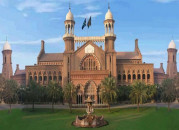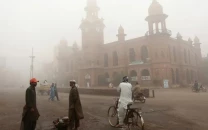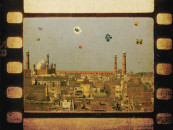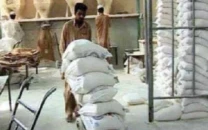Two halves of one: ‘Partition divided a people who had lived together for a thousand years’
Speakers urge the youth to use social media to forge connections with their counterparts across the border

Speakers urge the youth to use social media to forge connections with their counterparts across the border. PHOTO: FACEBOOK
The bloody division of the Punjab, as Professor Ishtiaq Ahmed of Government College University called it, had sparked the first occurrence of ethnic cleansing since World War II.
The carnage, though spread out, was worst in the Punjab, he said at a session titled The Two Punjabs at the Afkar-i-Taza Conference on Sunday.
Professor Ishtiaq Ahmed, Professor Rajesh Kochar of the Panjab University Chandigarh and Dr Sajid Mahmood Awan, senior research fellow at the National Institute of Historical and Cultural Research, spoke about the differences which emerged on both halves of the Punjab post Partition. One of the most prominent differences they spoke about was how the middle and upper-middle class and educated groups in Pakistan had distanced themselves from Punjabi language. The three speakers urged the youth of both countries to interact and learn about the joint history of the two sides divided by a border.

Ahmed said a large percentage of carnage during the Partition had taken place in the Punjab. Of the 15 million people who had migrated from one country to the other, 10 million of those were in the Punjab. He said the Partition had divided a people who had been living together for over a thousand years.
Over time, the divide carved out two different languages within Punjabi. Since 1947, it has undergone fundamental changes in vocabulary structure and the choice of symbols, he said.
Ahmed concedes that the divide had existed prior in some form – the Devanagri and Gurmukhi script were both used for Punjabi. It is deeply rooted in how Guru Angad Dev started a special language, Ahmed said while discussing Guru Angad’s standardisation and development of the Gurmukhi script.
Ahmed said it was astonishing how Pakistan was dominated by Punjabis and yet there was little pride associated with speaking the Punjabi language.
“If there is any city where Punjabi should be spoken it is Lahore since it was the capital of joint Punjab,” the professor said.
Ahmed said it was perhaps because Pakistan had always tried to shed off its joint past that there was no national narrative to mourn the loss. “I, however, mourn it as a deep wound in our history,” he said.
Professor Rajesh Kochar explained that a difference arose in the Punjab when the British started formalising languages in the subcontinent and brought them to the classroom. “Differences in language arose after the introduction of dictionaries and scripts by the British,” he said.
Kochar said the British tended to formalise scripts and associate languages with a particular background, making it more likely for a particular religious community to adopt them. He gave the example of Urdu which, he said, was more “Persianised” by the British. “Associating language with religion is perhaps the worst thing you can do to a language,” he said.
In the subcontinent before the British arrived, differences were less pronounced and a large number of Hindus learned Persian because it helped them obtain jobs in the government, Kochar said.
This was true even after the British arrived. He said the Hindus had wanted to benefit from a scheme introduced by the British in which English was taught free to anyone who knew Persian.
Kochar urged young people to use social media to create cultural and social connections which had been lost since Partition due to the emergence of an identity based on religion. He said while physical movement between the two parts of the Punjab does not seem a likely possibility the youth should make use of modern technology.
Sajid Mahmood Awan spoke about the resilience of Punjabis when confronted with invaders. He said there were similarities between cities on both sides of the border which were located close to each other.
He said Faisalabad and Ludhiana mirrored each other as business towns while Jhelum and Patiala were both known for producing warriors.
“If you want to normalise relations between India and Pakistan you have to normalise relations between the two Punjabs,” he said.
Published in The Express Tribune, April 4th, 2016.



















COMMENTS
Comments are moderated and generally will be posted if they are on-topic and not abusive.
For more information, please see our Comments FAQ